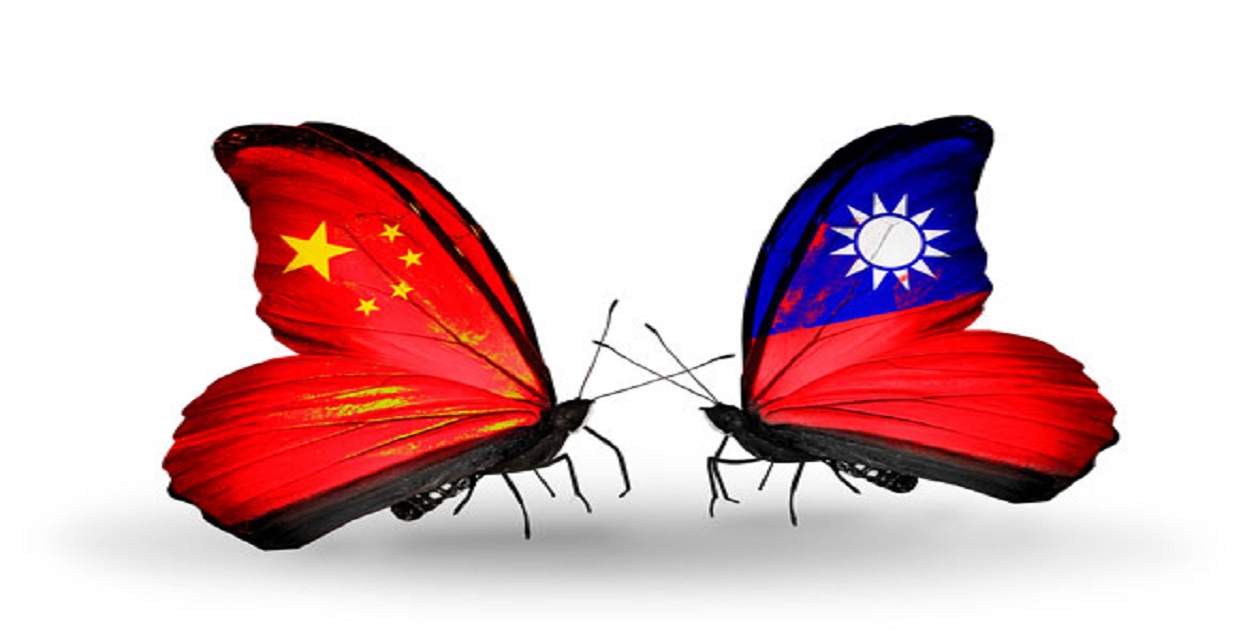“We support the One China policy. However, we expect you to also have a One India policy.” These were the words of the late External Affairs Minister, Sushma Swaraj spoken to the Foreign Minister of China, Wang Yi in June 2014. With rising Chinese belligerence on Indian territories and its total disregard for New Delhi’s sensitivities on sovereignty and territorial integrity, it is indeed time to revise the One China policy and strike where it hurts China. Arguably, if India challenges the One China policy, it could unnerve the dragon. This is because One China is critically related to the issue of Chinese legitimacy.
Legitimacy in simple terms means the right to rule or govern. But this right is based not on force or coercion but on endorsement. That is, the key to legitimacy is recognition. This is what threatened China in June 1950, when with the outbreak of the Korean War, the US administration under President Truman which had earlier recognized the People’s Republic of China (PRC) declared that “the status of Taiwan has yet to be determined” and thus resumed economic and military support to Taiwan. It may be recalled that in 1949 after defeating the Nationalist Guomindang (GMD) in the civil war, the Chinese Communist Party (CCP) formed the government and declared itself as the sole legal government for the whole of China. At the same time, the Nationalist Guomindang (GMD) Government fled the Mainland and formed the Republic of China (ROC) in Taiwan. But the onset of the Cold War led the US to withdraw recognition to the PRC and support Taiwan. This brought into effect the existence of two Chinas, the PRC and the ROC. Inevitably, this triggered the legitimacy crisis. The question of who represented the real Chinese nation loomed large for the PRC.
Also, due to US support for Taiwan and hostility towards PRC, Beijing remained unrecognized in the global community and stayed out of the United Nations until 1971. It is in this context that the PRC made One China policy a precondition for countries to establish diplomatic ties with it. This underscored first that the countries should acknowledge Taiwan and Tibet as part of the Mainland China, and second, the countries had to choose between either supporting the PRC or the ROC.
The second important consequence that the legitimacy issue had for Beijing is related to the notion of sovereign territoriality. The formation of a separate Chinese government under the GMD was seen not only as a reneged province but as a territorial loss and an incomplete sovereignty. This loss basically reminded China of the century of humiliation that the Western imperialism had inflicted on it. Also, this threatened to undermine its standing as a legitimate sovereign state. Additionally, this allowed the US to constantly play the Taiwan card against China. Even after establishing formal diplomatic relations with the PRC on 1st January 1979, and accepting to adhere to the one-China policy, US simultaneously signed the Taiwan Relations Act in April 1979, thus establishing a quasi-formal defence commitment to Taiwan. Since then, the US has kept the One China issue on the boil. These twin aspects of the legitimacy crisis for China in the Cold War era, one emanating from lack of international recognition and the other from loss of territory, engendered an erosion of power.
Drawing from Christian Reus-Smit’s power-legitimacy linkage, legitimacy is one of the vital sources of power, and power, according to him, is the product not merely of material capabilities, but also of nonmaterial factors, of which legitimacy is crucial. This means, a crisis of legitimacy would have an impact on maintenance of power. This exactly happened for China in the post-1949 era when Taiwan was internationally recognized and counted among the big five in the United Nations Security Council. China was clearly rendered vulnerable. It was in this context that it signed the 1954 agreement with India. By getting Nehru to sign the 1954 agreement, China not only got India’s legitimation on Chinese invasion and occupation of Tibet, but also got recognition as a true representative of the Chinese nation. Arguably, for China the disputed border was not an issue. It was India’s recognition of China’s sovereignty over Tibet that mattered most. Hence, India’s acceptance of One China policy bolstered its power and legitimacy. This significantly suggests that for China, legitimacy is contingent on its sovereign control over territory. In other words power of the Chinese state stems from its notions of territoriality. At this point, a couple of questions arise. First, why does territory matter to China? Second; why a loss of territory is tantamount to loss of power and thereby, a loss of legitimacy for China.
The answer lies in the Chinese sense of vulnerability associated with the notion of territory. Geographically, China’s Central Plains, which constituted the core of Han Chinese population, is surrounded by a non-Han periphery region forming almost a crescent shape. This peripheral region which although comprises the vast 63.7% of the mainland is dominated by only 8.49% of China’s non-Han minority population. Tellingly, this indicates the enormity of territory under a miniscule minority population, mostly along the strategic northeastern, northern, and western peripheries. Historically, this peripheral region, which comprises today the autonomous regions of Inner Mongolia, Ningxia, Xinjiang, Tibet, and Guangxi were not under the control of the Chinese imperial dynasties. Also, for most part of its history, China confronted the threat of nomadic invasions from its north and north-western peripheral regions, thus enhancing its territorial vulnerability. These barbarians not only plundered the rich Yellow River basin but also constituted the ruling dynasties of imperial China.
Furthermore, the identity of the Chinese people as Han, coalesced only in opposition to the barbarian dominance of China’s Central Plains from the post-Tang era when the Chinese Song dynasty was pushed to the south of the Yangtze Valley. From then on, there arose a persistent call among the Han Chinese to retrieve the Central Plains from the hands of the barbarians. Therefore historically, security of the core territories had been a perennial Chinese concern.
Moving on, in the 19th century, the defeat of the Manchus in the Opium Wars led to signing of a series of unequal treaties between the Qing dynasty and the Western imperialists that resulted into ceding of extraterritorial rights to the foreigners which eventually turned China into a semi -colony under some 92 foreign powers. This fateful development is captured in the oft-mentioned phrase ‘cutting of the Chinese melon’. Moreover, this loss of territory was accompanied with a loss of centrality when China was defeated in the First Sino-Japanese War of 1895. This defeat by the Japanese forces stripped Taiwan off from China and caused Korea to become independent and ultimately caused the collapse of the Chinese world order. This predicament is aptly captured in the nationalist writings of the time in the phrase ‘Wang Guo’, meaning, the death of the state. That is, the loss of territorial sovereignty was considered synonymous to the collapse of the state. It was at this juncture that imperial China understood the Westphalian notions of sovereignty, defined in terms of fixed territorial boundaries and sovereign authority. Also, it realised that the imperial notion of ‘loose reign’ or indirect rule was ill-suited to confront the new menace of Western ‘barbarians’.
Consequently, the Qing rulers transformed its civilizational frontiers into definite national boundaries. Xinjiang was thus ‘provincialised’ in 1884, and so was Taiwan, in 1887. Before it could invade and provincialise Tibet, the Great Game ensued and that precluded the Qing China from making further territorial encroachments. This task of nationalizing the frontiers was completed with the foundation of the PRC. As soon as the new government was formed, it embarked upon the invasion and occupation of Tibet. Notably, in the post- World War II era, the nation-state model had become a universal standard for state formation and sovereignty. China too appropriated it to legitimise its sovereign political power.
But while the nation-state system allowed China to firm up its borders, it also concurrently opened up new fault lines of conflict in the nation-building process. In fact, China having typically been motivated by the historical need to securitize its borders paid no heed to the different and diverse cultural identities of the peripheral regions. To merely gain sovereign control over the periphery, it crafted a minority policy that essentially coerced the non-Han identities to submerge within the greater Han nationalism. Inevitably, this resulted in a growth of minority nationalism, be it Uighur unrest or the Tibetan movement, all of which exposed the fragility of the Chinese nation. Therefore, on the one hand the existence of Taiwan, albeit as a de facto sovereign power, and on the other, the simmering minority unrest, both point to the fragility of Chinese nation building process and limitations of its legitimacy claims, thus, threatening to destabilise the territorial identity of China.
From the above analysis, two things become apparent. One, China has deep-seated vulnerability on territorial issues owing to the critical linkage between territorial sovereignty and political legitimacy. And two, the nation-building process in China is both incomplete and fragile and this exacerbates its territorial vulnerability. Viewed in this context, challenging the One China policy would certainly unnerve the Chinese. Thus, India needs to rethink its One China policy. Also, given Beijing’s disregard for One India policy, challenging the One China policy is not only desirable but also doable to tame the belligerent China.
(The paper is the author’s individual scholastic articulation. The author certifies that the article/paper is original in content, unpublished and it has not been submitted for publication/web upload elsewhere, and that the facts and figures quoted are duly referenced, as needed, and are believed to be correct). (The paper does not necessarily represent the organisational stance... More >>
Image Source: http://chinhdangvu1.blogspot.com/2018/06/two-china-policy-vs-one-china-fallacy.html











Post new comment